For many years I could not tell apart two ground cherries, Physalis walteri and Physalis viscosa. One was mentioned in a book I had, the other in another book. The pictures were different, too, and the descriptions. Then one day I bought a third book and the mystery was solved. It said both species were the same plant.
Both previous authors, in their egotistic little ways, failed to mention the plant had a synonym. And while they both described the plant each chose which details to include and how exacting to be. And as it were, the pictures each included showed a yellow flower pointing down. One can guess why: Sometimes the blossom has a ruby throat and sometimes it does not. Something those two authors failed to mention but the third did, and the third included synonyms. Mystery solved. As for the photos looking differently, plants of the same species can look different depending up many things such as daylight conditions or different environmental factors from one location to another. Some mistakes, however, are not so forgivable.
I have two books that describe the Dioscorea alata, or winged yam. It’s very high on the list of edible species. One author says the vine twists clockwise, another says the vine twists counter clockwise. That’s because the authors were either in very different locations (say Florida and Australia) or one was looking down at the vine and the other looking up. The change of perspective causes one to change the description of the twist.
It’s the same thing with the Coriolis Effect such as water spinning as it goes down a drain. If water spins when it goes down a drain is spins in the same direction all over the world. It doesn’t go one way in the northern hemisphere and another way in the southern hemisphere. The earth turns only one way and the water spins only one way. What changes is the perspective of the viewer. Our two viewers are essentially looking towards the equator. They see the same spin, just their perspective has changed. It is the same with the yam. Look up the vine goes one way, look down it goes another. This is why I describe the vine at eye level and say it has an S-twist or a Z-twist. Those terms are borrowed from knot tying. In the direction they grow the S-twist goes from your lower right to upper left, the Z-twist lower left to upper right.
Botany Builder #21: When trying to identify plants, or particular species, hairs or lack of hairs can be important. Hairs protect the plant from insects or herbivores. The hairs can also keep sexual parts of the plant warm or cool them off.
Trichomes make a leaf feel like sandpaper, or a cat’s tongue, Caesar Weed is a good example. Some plants like Cleavers have short hairs that hook the fiber of your clothes causing the stem to break off and perhaps carry the seeds around, a means of distribution called zoochorous, zoo-oh-CHOR-rus in English with an Old French ending “of ous” meaning have or full of. The word is from the Greek zoion, “animal” and chorein, “to make way.” Some refine zoochorous a little more with endo-zoochorus, spread by animal from the inside — such as birds with droppings — or epi-zoochorus, on fur et cetera.
Stinging nettles have two part hairs, the pointy end and near the bottom a bulge filled with chemicals that burn. When you touch the plant two things happen. The sharp hair punches a hole in your skin then the chemicals at the base seep into the wound. At least three of those chemicals are acetylcholine, histamine and 5-hydroxytryptamine. (As an aside, acetylcholine is necessary for memory and lack of or reduction of it an indication of Alzheimer’s. I wonder if stinging nettles leaves would help with memory issues? In health food stores acetylcholine runs about $1 per serving.)
Some plants have hairs with little glands sitting on top , such as the Sonchus asper. Others have stellate hairs, like star bursts, tufts. Often these stellate hairs also have hooks so they can hitch a ride to a new location. Hairs and spines do more than thwart creatures. They provide greater surface area, or create a wind- or sun-deflecting blanket. Mats of hair can help control a plant’s temperature or reduce water loss.
Here are some various plant hair terms: acicular: needle-shaped; appressed: lying closely and flatly against the plant’s surface; arachnoid: cobwebby; canescent: gray-hairy and hoary; capillary: very slender or hairlike; cespitose: matted or growing in little dense clumps; ciliate: fringed with hairs on the margin (kudzu is an excellent example of this); clavate: club-shaped (big at one end); downy: with very short, weak, soft hairs; echinate: with stout, blunt prickles (like the hedgehog); ensiform: sword-shaped; glabrous: without hairs; hirsute: with rough hairs; hirtellous: like hirsute but with smaller or more diffuse hairs; hispid: with stiff, bristly hairs; hispidulous: like hispid but with smaller or more diffuse hairs; hoary: closely covered with a white or whitish hairiness; indumentum: a heavy covering or hairiness; lanuginose: woolly or cottony; lanulose: woolly with very short hairs; mucro: a short and abruptly sharp or spiny tip; mucronate: ending with a sharp point, a mucro; pilose: shaggy with soft hairs; plumose: feathery, like the pappus hairs of some composites; puberulent: like pubescent but with smaller hairs; pubescent: downy with short, soft hairs; recurved: bent or curved downward or backward; retrorse: bent or turned backward or downward; septate: divided into partitions; sericeous: silky; setose: covered with bristles; stellate: once or twice forked, or arms radiating from base;
tomentose: densely woolly or soft-matted hairiness (often said of escaped culitivar grapes in Florida); tomentulose: like tomentose but less so; torulose: twisted or knobby; uncinate: hooked at the tip; velutinous: velvety with erect, straight, moderately firm hairs; villous: shaggy with long, soft, not matted hairs.
Class Schedule:
Saturday, July 7th, Wickham Park, 2500 Parkway Drive, Melbourne, FL 32935-2335, 9 a.m.
Sunday, July 8th, John Chestnut State Park: 2200 East Lake Road, Palm Harbor, FL 34685, 9 a.m.
Saturday, July 14th, Bayshore Live Oak Park, 23157 Bayshore Rd., Port Charlotte, FL 33980. 9 a.m.
Sunday, July 15th, Dreher Park, 1310 Southern Blvd., West Palm Beach, 33405, 9 a.m.
I am in the planning stages of a trip at least to North Carolina in August. I am in need of places to hold classes. I have places in Ocala, Gainesville and Jacksonville, Florida, but would like some imput for possible class locations farther north. Here is the tentative schedule on the way up:
August 10 Ocala; August 11 Gainesville; August 12 Jacksonville; August 13 Savannah; August 14 Charleston SC; August 15 Charlotte NC; August 18/19 Boone NC area. Then August 27th either head north to New England or south perhaps over towards the west side of Georgia, Mississippi, western Florida et cetera. If you have any suggestions please let me know. I am also toying with a ride through Deal’s Gap.
I Went to a Garden Party (remember that Ricky Nelson song?) This garden party was far better than Nelson’s song, but I just couldn’t resist the reference (Nelson and band died in a plane fire the same year as the above video was made.) Andy Firk held one of his famous get-togethers in his Arcadia FL home attracting upwards towards 100 movers and doers in the plant community. The gamut ranged from folks living off the grid, to political plant issues, goat appreciation, permaculture, primitive fire making, native plants and much more. As Green Deane lives by a schedule my participation was iffy until the day before but I had a very nice time meeting all kinds of folks involved with the environment. Next time I will schedule more time. Thanks Andy. By the way, Andy is a self-employed wildcrafter and has quite an organic homestead. Definitely a man living off the land. You can find him on Facebook
Liking Lichen: If you’ve taken any of my classes you known I’m positive about lichen. They don’t taste that good — most of them — and they need soaking to make them edible — most of them. But nearly all 19,000 of them are edible, a famine food and medicine available around the world, and now out of this world. Lichen were among several organisms sent to the International Space Station and left outside for several months. The lichen survived and were the hardiest of the lot. You can read the entire story here. If you want to read more about the uses of lichen on earth here are two links, Reindeer Moss and .
DEADLINE: Just read the actor Andy Griffith died today. Did you know he had a degree in music? He was on his way to becoming a preacher when he changed majors to music getting a degree in 1949. He then got involved in acting which led to comedy. When I was a kid he used to release comedy records. Brings back memories. We used to laugh so hard especially over his routine of playing football with a pumpkin.
To donate to the Green Deane Newsletter click here.

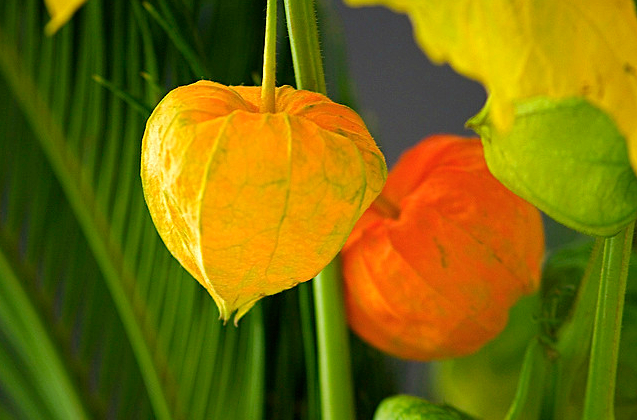
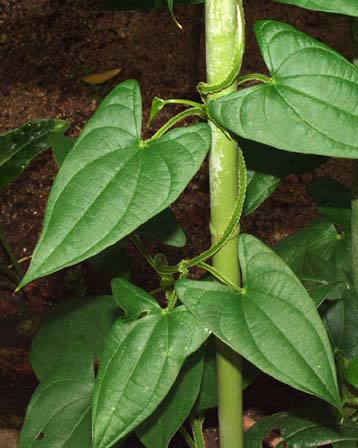
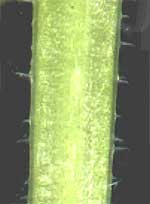
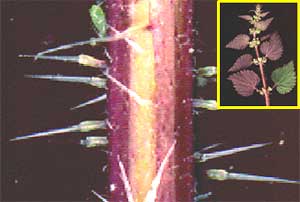
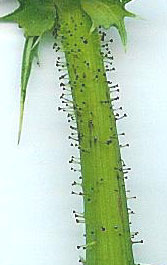
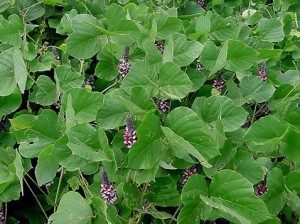
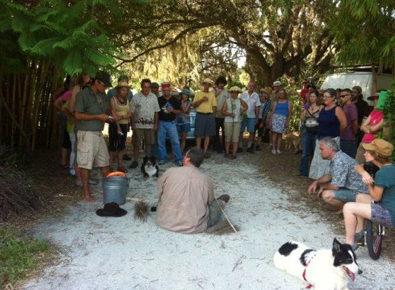
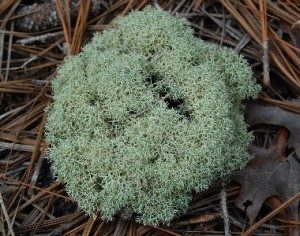


I so happy i found your website….thank you. 🙂
Great to meet you in person, Dean and your talk at Andy’s Garden Party was excellent. We want to organize some walks for you here in Polk County. Maybe some weekend you can do one on Saturday and one on Sunday. Our friends Jarrid and Robyn spoke to you about having one over here in Polk, thinking one could be more in their neck of the woods and another more in ours. We’ll talk more with them and you and what you’re doing is certainly the right time!
I have been south of the equator. Water when you unplug the sink or flush the toilet; does indeed spin to the left. Regardless of which way you are looking. I live in Florida (north of the equator) and here it spins to the right…
Actually it doesn’t. The water spins in the same direction, it is your perspective that has changed. Think of the north pole as the top, and the south pole as the bottom. The earth spins one way and spins the water one way. At the north pole you are looking down at the water and at the south pole you are looking up at the water. At the north pole it will appear to go one way and at the south pole the other way but in reality is is spinning the same direction. It is you who has change not the water. You can demostrate it with your finger on a table. Make a circle with your finger going counter clockwise while you are looking down at your finger. Keep making the counter clock wise ciricle but raise you hand above your head. Instantly it looks as if your finger is now spinning clockwise. The spin is the same, it is your perspective. The difference is in the southern hemisphere you are essentially upside down.
The idea that the coriolis effect controls the spin of such a small-scale phenomenon as water going down a drain is an urban legend. Weather systems, yes – toilet water, no. See: https://plus.google.com/108952536790629690817/posts/M5qUhKUUVCB
http://en.wikipedia.org/wiki/Coriolis_effect#Draining_in_bathtubs_and_toilets
http://sciencebasedlife.wordpress.com/2011/05/28/the-hemisphere-youre-in-does-not-change-the-spin-of-the-water/.
I really don’t disagree with you. I use a toilet as an example people can relate to.
here in gove, northern territory, it spins clocewise.
Yet if you were under the water looking up it would appear to spin counter clockwise.